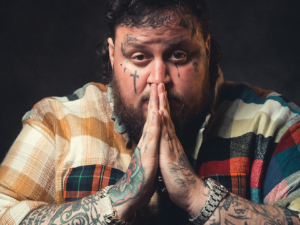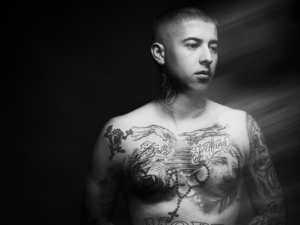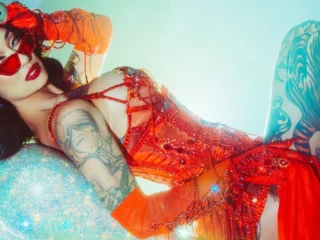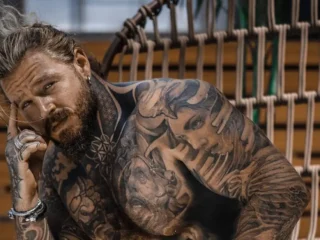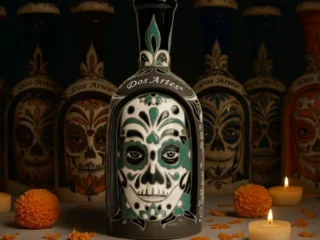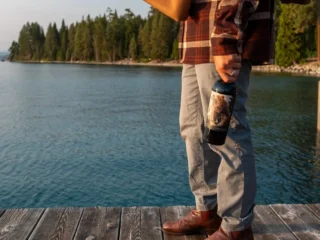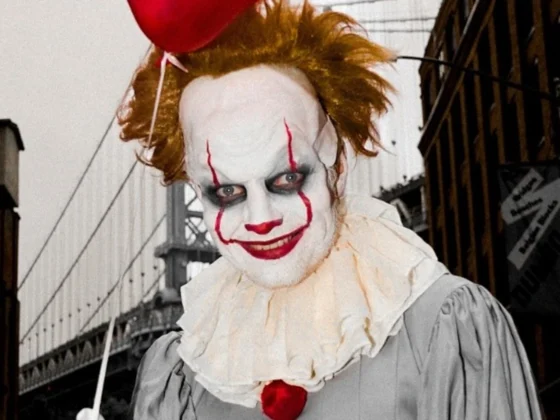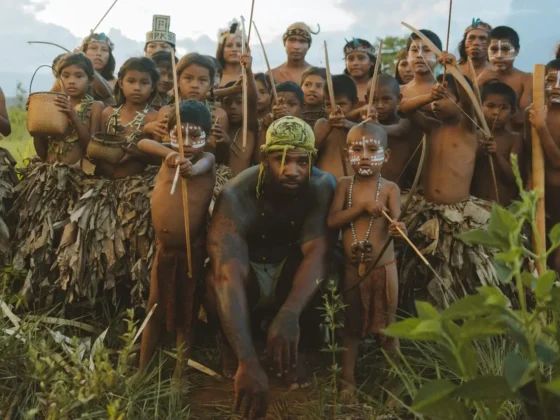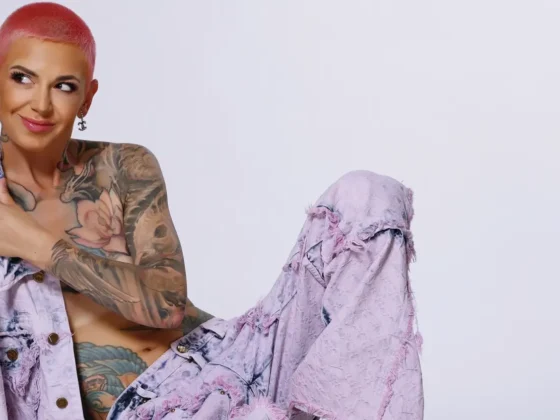Charlie Connell
February 5th, 2020
The Raucous Raconteur
After seven records telling his own stories, Frank Turner turns his attention to the true tales of remarkable women in history
Photo by Casey McAllister
Frank Turner is, at his core, a storyteller. Throughout his discography, in bands both hardcore and acoustic, Turner has told hundreds of different anecdotes. Among them are stories of great joy and stories of traumatic heartbreak. For his eighth album, “No Man’s Land,” Turner is telling tales unlike any he has told before.
“I tend to write in an autobiographical and confessional style,” Turner explains. “There’s nothing wrong with that, it’s what I’m known for and what I’m good at. I just thought it would be interesting as a writer to change that up and write from somebody else’s point of view, about other people’s lives and experiences.”
Inspired by a love of history—a flame that has been stoked by years of touring and all the reading time it allows—as well as the long tradition of storytelling songs in folk music, Turner set out to tell tales of historical figures that had been overlooked. The result is an album of 13 songs, all of them about women.
“I got about five songs into writing about stories I thought were cool and were worth sharing and were worth discussing more collectively than we usually do,” Turner says. “And I realized that every song I had so far was about a female historical figure. That seemed really interesting to me. Obviously, there is an implied politics when you are trying to tell undertold stories and you end up just talking about women.”
The breadth of “No Man’s Land” is quite extensive. Historically, the timeline of the album stretches from Byzantine Constantinople (“The Hymn of Kassiani”) to the crash of the Challenger (“Silent Key”). Sister Rosetta Tharpe, one of the pioneers of modern music, has a song (“Sister Rosetta”) alongside one about the infamous World War I spy Mata Hari (“The Eye of the Day”). Turner sweetly ends the album with a tribute to his mother (“Rosemary Jane”).

The optics of a man releasing an album filled with songs about women had the potential to kick over a hornet’s nest of controversy, and it is something that Turner considered throughout the entire process. He had discussions with Catherine Marks, his producer. He had discussions with his wife, Jessica Guise. He talked about the project with his sisters. “At the end of the day, I made this record because I had the idea and it seemed like a good one,” Turner says. “Nobody has to like it, but nobody can stop me from doing it either.”
Inevitably, Turner did get some blowback when the album was released. The songwriter had to find a way to differentiate between those who wanted to have an honest discussion about the material, and those who essentially spend their time looking for something to be angry about on the internet. “One of the things it seems people have forgotten in our modern society is that it is not the job of the artist to bow to the mob,” Turner says. “To have integrity as an artist is to tell the mob to fuck off and do whatever you want. That’s something I believe in very firmly.”
As the songwriting process continued, Turner found there were two major factors that would limit the scope of the project. Firstly, there was no possible way that he would be able to tell every story he wanted to, “I had a very long list [of people to write about] by the end of the record,” Turner muses. “In fact, for every song I wrote, there are another five people that I was thinking about writing about.” This includes a female pirate by the name of Sadie the Goat, but unfortunately, everything but her terrific moniker was lost to history.
Secondly, the very medium of folk music comes with one major restriction—time. “Obviously, the job I set for myself was to tell these people’s entire life stories in three-and-a-half minutes, ish,” Turner says. “To be able to do that respectfully with a real person is actually quite tough.”
One idea Turner had was to write detailed liner notes to help listeners untangle some of the more in-depth lyrics. The only problem is that nobody buys physical records any longer. That’s where the idea of a companion podcast came in. In each episode of “Tales From No Man’s Land,” Turner is joined by a guest as they further explore the subject matter of each song.

Likewise, there is so much meaning and depth behind Turner’s tattoo collection that one could easily make a podcast exploring his artwork. His love affair with tattoos started early at the age of 16 when he took part in the time-honored tradition of sneaking away to get tattooed and then hiding it from his parents. Being very much into hardcore music at the time, Turner had a UKHC (United Kingdom Hardcore) logo tattooed on his arm by Bugs, one of London’s legendary tattooers. Turner didn’t realize this at the time, he took it as a shop owner filling in for an artist to do a 10-minute banger.
“I was able to keep it hidden from my mum and dad for five years,” Turner laughs. “It was pretty funny because by the time they did find out my mum was horrified. My dad was furious. I should have said, ‘You haven’t noticed for five fucking years, so it can’t be that big of a deal.’”
In his collection, there is nary a drop of color. While Turner was first inspired to get tattooed by the older kids in the punk scene, the way he went about crafting his style came from an unexpected place. “[I have] all black ink,” he explains. “One of my aspirations when I started getting tattoos was the film ‘Memento.’ He’s got all the information from the case that he’s studying tattooed all over him, and I just thought it looked really fucking cool the way it was almost an information-based aesthetic.”
Over the years, he has added imagery to all of the script tattoos, but it is the script pieces that tend to dominate his collection. Some of these include the words “Free Born” across his fingers, a “Don’t Panic” nod to Douglas Adams, an homage to Springsteen’s “Born to Run” on his stomach and the name of his old band “Million Dead” on his arm.
As a man who lives and breathes music, it’s no surprise that many of Turner’s tattoos are inspired by bands he adores. There’s nothing unusual about that—fans get band tattoos all the time. But as a well-known musician, Turner often encounters the folks who inspired his ink.
“I’m a gigantic Hold Steady fan. ‘Separation Sunday’ is a record that changed my life and changed the way I think about songwriting, full stop,” Turner says. “[The way I think] about lyrics and storytelling and all that shit.” In a moment of inspiration drawn from Craig Finn’s lyrics to “Your Little Hoodrat Friend,” Turner had some blue-black ink scratched into his lower back, it says “Damn right I’ll rise again.”
“The very first time I met Craig I was absolutely shitfaced drunk, and I made a complete asshole of myself showing him my ass, essentially,” Turner says. “Craig is such a gentleman that he pretends now that he doesn’t remember this happening, and I don’t believe him. It’s a fun tattoo. [I’m an] aspirational hoodrat, a wannabe hoodrat.”
While many of Turner’s pieces have a ton of meaning behind them, some of them, not so much. His entire left calf is filled with silly tattoos that were gotten on little more than a whim. These are the kind of bangers you end up with when having a little too much with friends. “It’s just the stupidest shit,” Turner says. “A friend’s initials, a fucking Dale Earnhardt Jr. tattoo… I don’t even fucking know what NASCAR is.
“One of the funny things about getting a lot of tattoos is that in a roundabout way it really makes you less precious about your appearance rather than more so,” Turner continues. “After a certain number of tattoos, if someone says, ‘Hey, I’m going to tattoo a kangaroo with a unicorn horn on your calf,’ you’re just like, fuck it. Go ahead.”
Turner’s hands pay tribute to the band mewithoutYou and their song “The Fox, the Crow and the Cookie.” “I was in a place where I was feeling a bit of writer’s block and that whole thing,” Turner says. “Then I heard that album and it was like the scales fell from my eyes.” While he adores the tattoos, Turner could have had a little better timing. “I got those done about an hour before playing a show, which turned out to be a fucking stupid idea,” Turner chuckles. “It turns out I need to use my hands to play, who knew?”

You would think a man who spends so much time on the road—at press time he had played 2,434 shows as a solo artist—would know that he needed his hands to do his day job. Artists make the bulk of their money from touring these days, so it’s an essential part of the job. “If I wish to pay my rent, touring helps,” Turner explains. “That’s the boring answer, but the true answer is that I love it. It’s what I do.
“I consider myself to be a performer before anything else,” Turner continues. “The point of a live show is that it is ephemeral, it happens there, in that room, with that group of people.”
Don’t take a look at his acoustic guitar and be tricked into thinking that a Frank Turner show is a lowkey affair. His song structure borrows a lot from folk and country music, particularly on “No Man’s Land,” but you only need to peek at his first tattoo to know where Turner’s roots are planted. “The thing is, because I grew up playing in punk bands, the way I play guitar and the way I sing is informed by that,” Turner says. “I couldn’t get rid of that if I wanted to, which I don’t. It’s in my musical DNA to play with that sort of intensity.”
Turner is always prepared to spin a yarn through the ink on his skin, the sound of his voice and the notes his calloused fingers play on the guitar. Settle in and listen up to this raucous raconteur.
Editor's Picks
Royal & The Serpent
The hilarious and talented musician talks mental health, music, tattoos and more
Son of a Sinner
From rough-and-tumble roots to mainstream stardom, this genre-crossing musician is on a roll
A Cut Above
Celebrated barber Vic Blends can charge whatever he wants for a haircut, but all he really wants in exchange is a conversation and human connection



